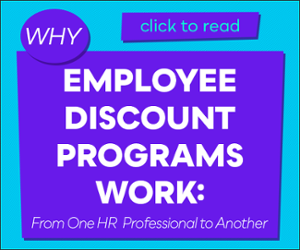What do you get when 16 million men come home after World War II?
Babies. Lots of babies.
From 1946-1964 Americans welcomed more "bundles of joy" than we'd ever experienced in our history. This rapid population growth led to a higher demand for food and supplies spurring economic evolution and fortune.
When this gigantic cohort plunged into the labor force in the early 1960s, many workplaces expanded to make room for the infusion of young talent.
But now, about half of “Baby Boomers” are over the age of 65. They’re retiring at an alarming pace of 10,000 per day and their exit from the workforce is proving to be just as impactful as their entrance.
Their retirement leaves many organizations understaffed and fighting for capable people to do the jobs Boomers did for so long. On top of that, caring for this oversized aging generation is creating one problem after another for the employees that companies have left.
So, Boomers aren’t just leaving the workforce, they’re taking many younger employees with them. Well, maybe not literally. But they may as well be, given the impact.
What Is The Caregiving Crisis?
.jpeg?width=394&name=older-folks-1200%20(002).jpeg) When it comes to understaffed professions, nursing and professional caregiving industries have taken some of the biggest hits. Alan Ormsby, a state director with AARP explains, “We’ve got this gigantic baby boomer generation and then there’s a much smaller 'Gen X' brigade to care for them. There just aren’t enough humans to provide paid care.” Of all caregivers in 2023, 1 in 5 were unpaid, which equates to 53 million caregivers.
When it comes to understaffed professions, nursing and professional caregiving industries have taken some of the biggest hits. Alan Ormsby, a state director with AARP explains, “We’ve got this gigantic baby boomer generation and then there’s a much smaller 'Gen X' brigade to care for them. There just aren’t enough humans to provide paid care.” Of all caregivers in 2023, 1 in 5 were unpaid, which equates to 53 million caregivers.
And with so many more aging adults requiring care, an increasing amount of responsibility falls at the feet of their children or other family members.
In other words, your employees.
Currently, 48 million Americans provide unpaid care to their loved ones. And six out of every 10 of those caregivers work at a paying job during at least part of their caregiving experience – many with children at home. So as if they aren’t busy enough raising their families and building careers, more than 1 in 6 (17%) U.S. employees have added caring for an elderly family member or friend to their already very full plate.
According to AARP, a caregiver’s duties could include:
- Acting as an advocate
- Dealing with health insurance claims
- Communicating and coordinating care with various healthcare and social service providers
- Providing transportation to and from medical appointments
- Helping with self-care and daily activities
- Handling medical equipment
- Administering injections, medications and wound care
On average, unpaid caregivers spend 34.7 hours per week on the various duties associated with caring for their relative. It’s practically a full-time job in and of itself. For some, it’s even more than that.
With so many obligations demanding their attention day in and day out, it’s no wonder these workers wind up disengaged and stressed at work. Or even worse, they quit. One study found that almost 40% of unpaid caregivers leave their job so they’ll have more time to care for a loved one.
Either way, the cost to employers is high. The cost of lost productivity in the U.S. exceeded $25 billion in 2020 alone because of employee caregiving responsibilities, and increased healthcare costs exceeded $13 billion.
For companies, there’s never a good time for valuable workers to walk away. After all, it was only a few years ago that record low unemployment rates meant record high employee turnover.
And then suddenly the opposite was true.
How the Pandemic Made the Caregiver Crisis Even Worse
Almost overnight, unemployment soared. Many employees left the workforce in order to be full-time caretakers. Some felt that assisted living centers and nursing homes were unsafe, while others were simply unable to find an available facility. In the few years of the pandemic, over 400,000 of the professional caregivers who worked at these facilities and provided in-home care left the workforce. That puts the responsibility squarely on the shoulders of the people you want to hire.
Caregivers who are holding down a job in addition to their caregiving responsibilities are feeling the effects too. For example, the pandemic made mental health concerns soar with 40% of adult caregivers reporting anxiety or depression symptoms. They reported more fatigue, sleep disturbances and increased financial worries. The pandemic made the very act of caregiving “more physically, emotionally and financially difficult.” Of course it didn’t help that many caregivers stopped socializing in order to protect their at-risk loved ones.
The fact remains that the caregiver crisis was in full force even before the pandemic, so it's no surprise the crisis has outlasted it.
So what do you do?
Start by assessing your current policies and benefits then make changes that support the caregivers in your organization.
How To Support Caregiver Employees
Most of these employees are incredibly devoted to their career and still have a lot to give. A little support from their employer can go a long way to help these talented workers remain engaged.
Sometimes it’s as simple as being aware. And quite often, we have untapped resources at our fingertips that will make a huge difference for employees if we’d only utilize them.
Here are 6 practices to incorporate more caregiver support into your workplace culture.
- Learn to recognize the signs of an employee under caregiving stress. In many cases, caregivers try to hide their extra duties at home in order to protect themselves at work. Only 56% of caregivers report that their supervisor is aware of their caregiving responsibilities. Potential red flags may include excessive tiredness, requesting spur-of-the-moment time off with vague explanation or sudden irritability and anxiety. Rather than turning a blind eye, HR can train managers to watch for signs that an employee may be struggling with pressures related to caregiving. And if they are…
- Provide tools and resources. Since some employees won’t ever ask for help, be proactive in offering direction to potential solutions. Publicize resources that’ll make their life easier. Something as simple as an outline detailing how to hold a family council would likely be extremely useful for individuals who are facing these challenges for the first time. Organizations like AARP, Alzheimer’s Association, Milken Institute as well as state departments for disabled persons are all great places to send employees needing more support.
- Point out the benefits you already have. Many employers have upped their benefits game in recent years. Chances are, some of those added lifestyle benefits will benefit caregiver employees. For example, your company may offer access to legal services. These can be a huge help to individuals who may need power of attorney to make important decisions for a friend or relative. Others may find a great use for telehealth services. Employee discount programs can help employees save money on meal services when they’re unable to personally prepare food for their loved one. Make sure your employees know what’s available to them and how to gain access to those benefits. If you're looking for new benefits, check out our article: 20 Unique Corporate Perks.
 Foster dialogue and peer support. Whether it’s in a formal, organized group setting or in casual conversation across cubicles, try to create an atmosphere where employees feel safe sharing what they’re going through with their co-workers. They may find out they’re not as isolated as they often feel. Sometimes knowing that others are or have been in their shoes gives individuals the extra push they need to stay positive and keep moving forward.
Foster dialogue and peer support. Whether it’s in a formal, organized group setting or in casual conversation across cubicles, try to create an atmosphere where employees feel safe sharing what they’re going through with their co-workers. They may find out they’re not as isolated as they often feel. Sometimes knowing that others are or have been in their shoes gives individuals the extra push they need to stay positive and keep moving forward.- Consider flexible work policies. Caring for an aging, ill or disabled person doesn’t always go as planned. Commonly, issues arise that need immediate attention or require prompt action. Where possible, allow workers the flexibility to work from home or work alternate hours. This can help give them the confidence and security they need to take care of their familial needs without feeling like they’re neglecting their job. Research suggests that these policies are good for the bottom line, too. One study found the return on investment to be between $1.70 and $4.45 for every dollar invested in flexible work arrangements. A key component is to create excellent tracking and communications systems so team members remain on the same page especially when one or more employees are out of the office.
- Consider offering paid leave. For some employees, having some amount of paid leave could mean the difference between being able to keep a job and needing to step away from the workforce altogether during their caregiving stint. This is especially true for women and BIPOC people who make up a disproportionately large percentage of unpaid family caretakers. An estimated 6 million caretakers could re-enter the workforce by 2030 if offered paid leave. This is important because businesses are already seeing a labor shortage after the pandemic. As the labor pool continues to shrink, some businesses may find it necessary to attract new talent from among those currently out of work.
Take Care of Caretakers
Unlike most workplace challenges, caregiving doesn’t originate, nor will it be completely resolved within the office walls. In fact, it’s not something that can be solved at all. Rather, with 41 million family caregivers in the U.S. alone, it’s an inevitable circumstance that all HR professionals will face in the coming years (if they aren’t already).
And it’s one that is growing drastically. In the year 2030, the youngest baby boomers will turn 65, meaning one in five Americans will be of retirement age. We already got a preview of what the economy will look like when they all retire – because many of them did in 2020 rather than risk working in an environment that put their health at risk. As of 2022, rising costs and companies desperate for workers have lured many of these people out of early retirement and back into the labor force. However, as this generation continues to age, they’ll soon leave a permanent gap in the talent pool AND drive the need for elder care through the roof
So if you as an employer aren’t doing anything yet, you’re missing a big-time opportunity to engage with your employees. On top of that, you may be sealing your fate for a troublesome number of employees to disengage or potentially even sign off for good.
The good news is, given the enormity of the issue, resources are out there to help.
For more extensive details and insights into family caregiving, you may want to view the latest report from AARP: Valuing the Invaluable.






